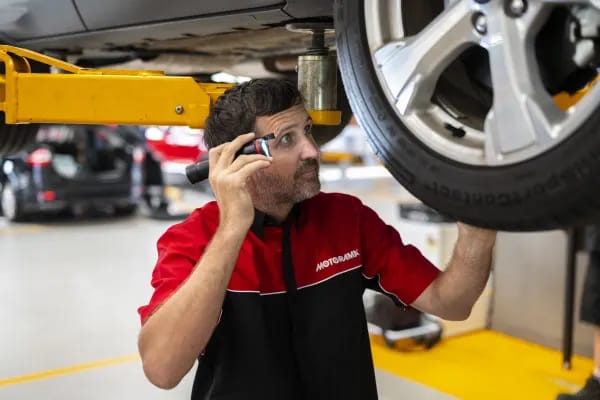
Everything You Need To Know About Car Brakes
Posted in Servicing Insights
Everything You Need To Know About Car Brakes
We all know that taking care of our brakes is one of the most important things we can do to extend the life of our car and ensure we travel safely from A to B. That's why a regular check up at your local car service centre is vital - as is knowing what make up these extremely important parts of your car.
BRAKE PADS
When you apply the brakes, you push down on pads which press against the brake drum or rotor to convert your car's kinetic energy into thermal energy via friction. Modern brake pads are made up of a combination of friction materials bonded to the backing plate. This is pushed against the brake rotor when the brake caliper piston pushes against the backing plate.
Organic pads are often used for street driving as the wear well, don't make too much noise and don't damage rotors. They perform well when they're cold, but are less effective when they get hot.
Semi-metallic pads are often used on sportier car models as they work well when they get hot. Metallic options are usually used on race cars, and aren't a great option for everyday driving as they squeal and create dust, are hard on rotors and don't work well in cold conditions.
BRAKE SHOES
Brake shoes are the mechanical parts controlled by the driver to bring the car to the stop. A metal part backs the brake shoe and the area that comes into contact with the brake is padded, providing friction that allows the car to stop without damaging the brake.
Brake shoes exist inside drum shoes, while disc brakes have calipers.
BRAKE FLUID
Brake fluid works to provide an incompressible medium that transmits pressure on the brake through the master cylinder to the calipers, clamping the brake pads against the discs.
Fresh brake fluid is effectively incompressible and allows the car's brake system to work well. Overheated fluid can boil in the caliper, however, which produces gas bubbles, leading to a 'soft' brake pedal. Fluid will only work when it's liquid, not when it gets so hot in becomes vapour, so the boiling point of your brake fluid is critical to how well you can brake.
Brake fluid also provides lubrication to all movable parts of the brakes, preventing corrosion and keeping things working as they should. The liquid must be compatible with rubber seals and hoses, letting breaking systems last longer and perform well.
Over time, this fluid absorbs moisture through your car's pipes, hoses and joints, decreasing the temperature at which it boils.
BRAKE ROTORS
Brake rotors, also known as brake discs, are what your brakes clamp down on to stop your car's wheels spinning.
Standard discs are smooth and flat with no slotting or drillings, unlike performance brake rotors.
The two types of high performance brake rotors are drilled and slotted.
Drilled rotors have holes drilled into them to allow for heat to escape. When brake pads press against the rotor, the friction creates heat that can lead to brake fade if it has nowhere to go. Holes also help water drain from brake rotors after driving through wet conditions. Damp brake rotors make it harder for brake pads to grab onto.
Slotted rotors use slots in the flat metal surface to move water, gas and heat away from the rotors. They are generally more durable than drilled rotors, however they tend to wear down brake pads quickly.
If you think that any part of your braking systems needs a check up, you can always bring it into one of our Motorama service centres.



